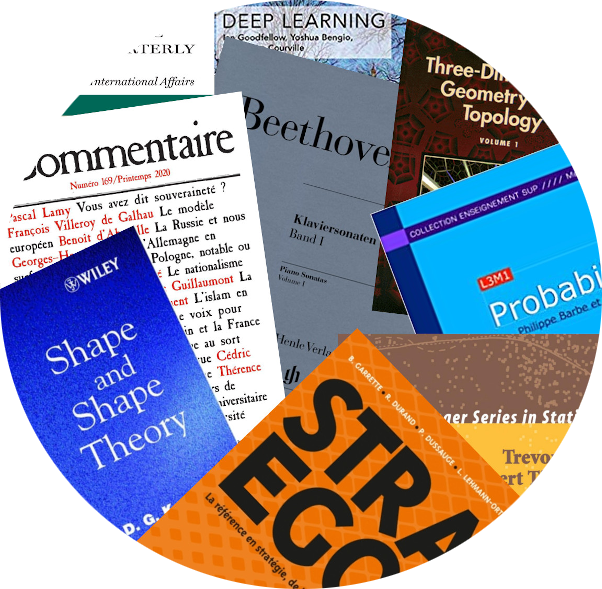 Philippe Barbe
Philippe Barbe

|
Constants in the changes in the media industryby Philippe Barbe
11 Nov 2020
|
This is the first in a 20-part series of articles delving into the role of Data Science and AI in Media and Advertising that expands on presentations I made in the US, France and China. Future articles will address a range of related topics.
It is a cliché to say that the media industry has undergone profound transformations driven by technological advancements which have changed how content is both created, produced and distributed and how audiences are measured.
A plethora of devices connected to the internet has made every user of a social media platform a content producer, and every social media platform a distribution channel. It has brought us unbelievable video special effects, automated journalism, and articles like this one shared on social media platforms.
Technology has enabled uncurated media content to blossom. The media gatekeepers have left the building to be replaced by algorithmic “content promoters”.
However, even though lies may be a strong word here, as Franklin D. Roosevelt put it, repetition does not transform a lie into a truth… but it makes it a cliché!
Data Science is all about finding patterns amidst the chaos or rapidly accelerating change. The patterns offer points of constancy. A moving car changes its position but you can find constancy in its speed or in its rate of acceleration or even changes in its rate of acceleration that make it possible to predict the car’s future position.
Media and Advertising Constancies:
1. Media is fundamentally a one-to-many way of communicating.
Media outlets put out messages (content) that are delivered to many. Though this content may be built by several, it is all in one place, to be delivered to many consumers.
2. How the industry makes money.
Paid advertising primarily with some having subscription or purchase revenue and most having some combination of all those which makes the media and advertising industries inseparable.
3. Fragmentation, not substitution
To fully appreciate this constancy, and how it holds a key to managing a media/advertising enterprise requires some history.
One of the earliest records of advertising comes from a pre-700 BC Chinese poem about a flute being played to attract shoppers to a candy stand, the first known outdoor ad. Almost 3,000 years later this outdoor medium, sound, is still with us … music played on front stores, market vendors haranguing potential buyers.
Pictographs are about 5,000 years old. Although we don’t know when the billboard was invented we can trace some printing plates back 1,000 years making it likely that the ancestor of the modern billboard is at least 2,000 years old and still with us, everywhere, ever bigger but also smaller, like screens on gas pumps.
Romans and Greeks put signs on their shop doors, de facto advertising their services. What business today doesn’t have a sign? The modern version of the sign is bigger than ever and often the entire window of a shop.
In the mid-16th century, a new medium, newspapers, appeared in Italy. From the very beginning, newspapers sold advertising to offset printing costs. In 1836, a French newspaper that relied on subspcription income introduced advertising to reduce subscription costs. Both forms of income are still with us.
Around 1920, commercial radios came into being. While the technology was ripe for commercialization, doing so raised an interesting business problem: buying a radio receiver was a one-time purchase, worthwhile only if programs existed, which required money.
Radio manufacturers imitated the newspaper model, paying for content production and infrastructure through advertising. This seeded the myth that most media is free to the consumer of that content, a fiction of course as it is paid for by advertising whose cost is embedded in that of the products the advertiser sells. A fiction perhaps, but the business model of very large “new media” tech companies such as Google and Facebook. And essential to understanding the media industry.
Started in 1928 and really developing in the 1930s and 1940s, television was radio augmented by a moving image and has migrated through a series of delivery mechanisms… air waves to cable, optic fiber and other technology, and maybe going back to air waves with the coming 5G network. Regardless of the delivery mechanism, TV is still with us, particularly for live events,
Appearing in the mid-1970s, cable TV infrastructure was so expensive to build that advertising couldn’t pay for it completely. By offering specialized channels, cable attracted audiences willing to pay for exclusive niche content… the same revenue model as newspapers in the 16th century.
In the 1990s, businesses began to connect to the largely government (ARPA, NSF) developed Internet to leverage that technology, thus opening the internet to business as we know it. Yahoo, Google, MySpace, Facebook, Match, LinkedIn emerged in the late 90s with content produced by unpaid users, with the same advertising revenue model as radio and newspapers to pay for infrastructure, salaries, and dividends.
Internet streaming, “over-the-top (OTT)” in media parlance, made its first forays around 2010. While the delivery technology is different than radio or TV, it is not fundamentally different as it delivers audio or video programs to the audience as is its revenue model… “free” to consume but paid for by advertising (or subscription for different levels of advertising, from little to none).
This short history reveals some changes, confirming the cliché that started this article.
But like a moving car, there is a great constancy, something Data Science looks for: as new mediums emerged for delivering messages from one-to-many, older ones didn’t disappear, though, in the case of newspaper, greatly suffer. Mediums evolve, like billboards going from painting on stones to their current electronic versions, but their purpose remains unchanged and they retain the same advantages and limitations. Their history is an international one, and remains so to this day.
It is a fragmentation, not a substitution of an old media by a new one.
This continuous fragmentation of the medium is the first reason why Data Science is key in the media industry and its future, as it is has been a constant over several millenniums. Fragmentation transforms one into many, and a few is enough for Data Science to be relevant.
Media Fragmentation and Data Science
The fragmentation described above creates several use cases for Data Science which we will discuss in this series of articles:
As a media company, how should I manage my asset? Data Science plays a key role to make management and operational decisions.
As an advertiser, what should be my media mix? Data Science can now make prescriptive recommendations. As a content producer, what is the best way to make my content visible and monetize it? Data Science informs on the ingredients for success.
Media Curation and Data Science
Another important lesson for Data Science from the history of media, and a topic we will explore in future articles, is that the distinction between traditional media and the internet lies less in the medium than in the curation of its content.
The importance of this point for Data Science is significantly different in these two forms of media because the business processes are different.
Because it is native digital, uncurated media is fundamentally based on machine-to-machine data, allowing more advanced automation. In contrast, the curated media Data Science cannot ignore the many human decisions, interactions and legacy involved that create considerable challenges in creating a good user experience and computer/human interactions.
Summary
Based on the history (which is data) of media and advertising, can we make some predictions on the future?
Over the long term new technologies will appear, new medium will appear, existing medium will evolve, and fragmentation will increase.
In the nearer term, an extraordinary fragmentation process has started that will increase at a rate unseen in history with the arrival of such advancements as 5G networks, AI, addressable television, and new standards like ATSC3.0 that will make it possible to deliver different content to different users of the same medium.
Data Science and AI will play a key role in making these advances possible. The old way of doing business is simply unsustainable in the coming level of fragmentation. An assertion that we will develop in future articles.
Stay tuned and I welcome your comments!